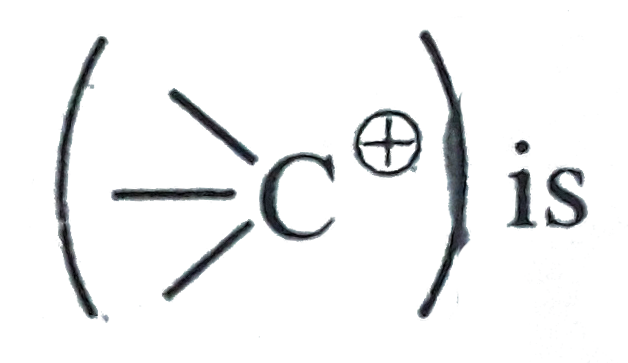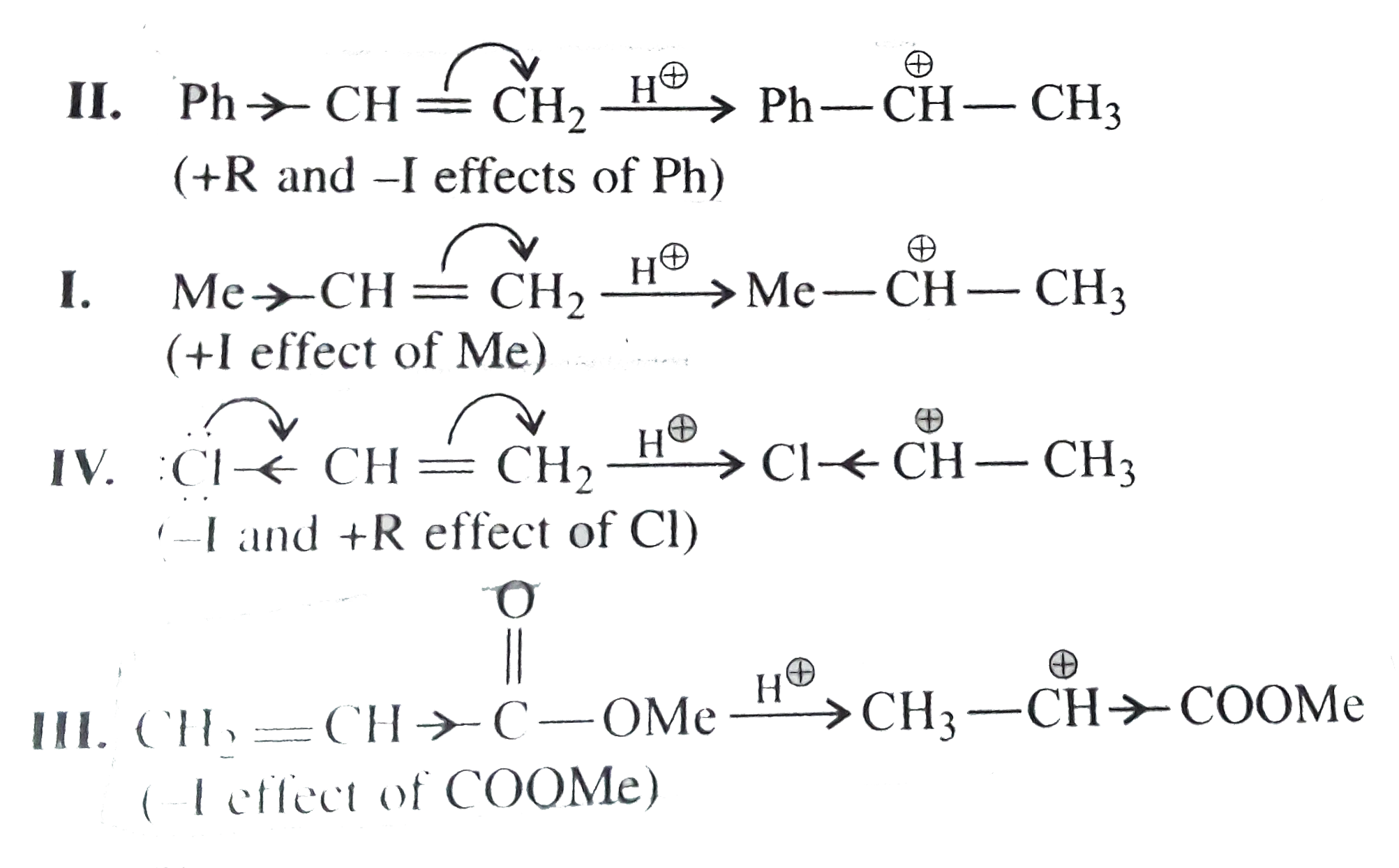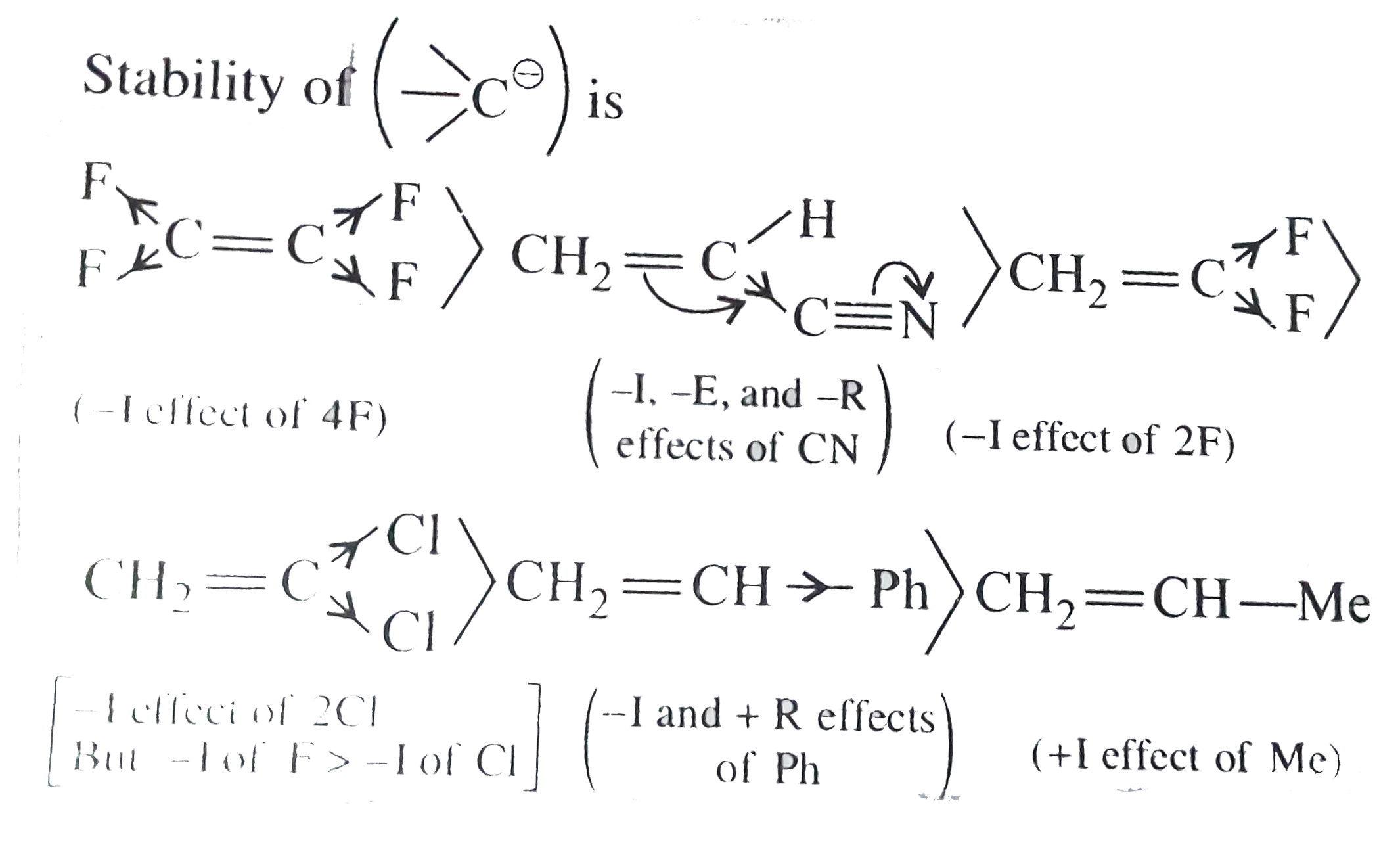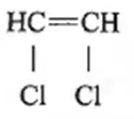(a)Give the decreasing order of reactivites of the following monmers towards catitopm addition polymerisation.
(I)MeCH=CH2
(II)PhCH=CH2
(III)CH2=CH−COOMe
(IV)CH2=CH=Cl
(b)Give the decreasing order of reactivities of the following monomers towards anionic addition polymerisation.
(I)Me=CH=CH2
(II)PhCH=CH2
(III)CH_(2)=CH=CN<br>(IV)H2C=Cl2
(v)H_(2)C=CF_(2)<br>(VI)F2C=CF2
(a)Cationic polymerisation is favoured by the peresence ofEDG(e.g.,Megroup.The more theEDG,the more stable is the intermediate carbocation,and as a result more favoured is the cationic polymerisation.
stability of is
is
(II)
(I)
The decreasing reactivity order towards cation polymerisation is(II)gt(I)gt(IV)gt(III).
(b) Anion polymetic is favouable by the presence of EWG(e.g.,→−X,−COOR,−CN,etc)The more theEWG,the more stable is the intermediate carbonion and consequently more favoured is the anionic polymersation.
Stability of 
The decreasing reactivity order towards anion polymersation is(VI)gt(III)gt(V)gt(IV)gt(II)gt(I).
Topper's Solved these Questions
- SYNTHETIC AND NATURAL POLYMERSBOOK - CENGAGE CHEMISTRYCHAPTER - SYNTHETIC AND NATURAL POLYMERSEXERCISE - Exercises Concept Application
20 Videos
- SYNTHETIC AND NATURAL POLYMERSBOOK - CENGAGE CHEMISTRYCHAPTER - SYNTHETIC AND NATURAL POLYMERSEXERCISE - Exercises Linked Comprehension
30 Videos
- SYNTHETIC AND NATURAL POLYMERSBOOK - CENGAGE CHEMISTRYCHAPTER - SYNTHETIC AND NATURAL POLYMERSEXERCISE - Exercises Assertion Reasoning
10 Videos
- SURFACE CHEMISTRYBOOK - CENGAGE CHEMISTRYCHAPTER - SURFACE CHEMISTRYEXERCISE - Archives Subjective
2 Videos
Similar Questions
Give the decreasing order of reactivity of the following alkyl halides in the Williamson's reaction.
i. (CH3)3C−CH2Br ii. CICH2CH=CH2
iii. (CICH2CH2CH3 iv. BrCH2CH2CH3
View SolutionThe increasing order of reactivity of the following halides for the SN1 reaction is
I.CH3CH(CI)CH2CH3
II.CH3CH2CH2Cl
III. p.−H3CO−C6H4−CH2Cl
View Solution
Knowledge Check
Give the decreasing order of reactivity of the following alkyl halides in the Williamson's reaction.
i. (CH3)3C−CH2Br ii. CICH2CH=CH2
iii. (CICH2CH2CH3 iv. BrCH2CH2CH3Aii gt iv gt iii gt iBi gt iii gt iv gt iiCii gt iii gt iv gt iDi gt iv gt iii gt iiReactivity order of the following alkenes for hydrochlorination (HCl) is
(I) CH2=CH−Cl (II) (CH3)2C=CH2
(III) CH2=CH−CHOAI>II>IIIBII>III>ICII>I>IIIDIII>I>IIArrange the following monomers in order of decreasing ability of undergo cationic polymerisation.
(I) CH2=CH−C6H4(NO2)
(II) CH2=CH−(C6H4(CH3)
(III) CH2=CH−C6H4(OCH3)AI>II>IIIBII>I>IIICIII>II>IDI>III>II
The decreasing order of reactivity towards electrophilic addition (e.g. addition of HX,X2, etc.) of the following is :
I.CH≡CH
II.CH2=CH2
III. H2C=CH−Cl
IV
View SolutionIncreasing order of reactivity of the following alkyl halides in the Williamson's synthesis is
I. CH2=CHCH2Cl
II. CH3CH2CH2Br
III. (CH3)3CCH2Br
IV. CH3CH2CH2Cl
View SolutionThe increasing order of reactivity of the following halides for the SN1 reaction is
I.CH3CH(CI)CH2CH3
II.CH3CH2CH2Cl
III. p.−H3CO−C6H4−CH2Cl
View SolutionThe decreasing order of reactivity towards electrophilic addition (e.g. addition of HX,X2, etc.) of the following is :
I.CH≡CH
II.CH2=CH2
III. H2C=CH−Cl
IV
View SolutionDecreasing order of reactivity in Williamson's ether synthesis of the following is:
I. Me3CCH2Br
II. CH3CH2CH2Br
III. CH3=CHCH2Cl
IV. CH3CH2CH2Cl
View Solution
